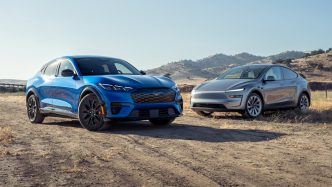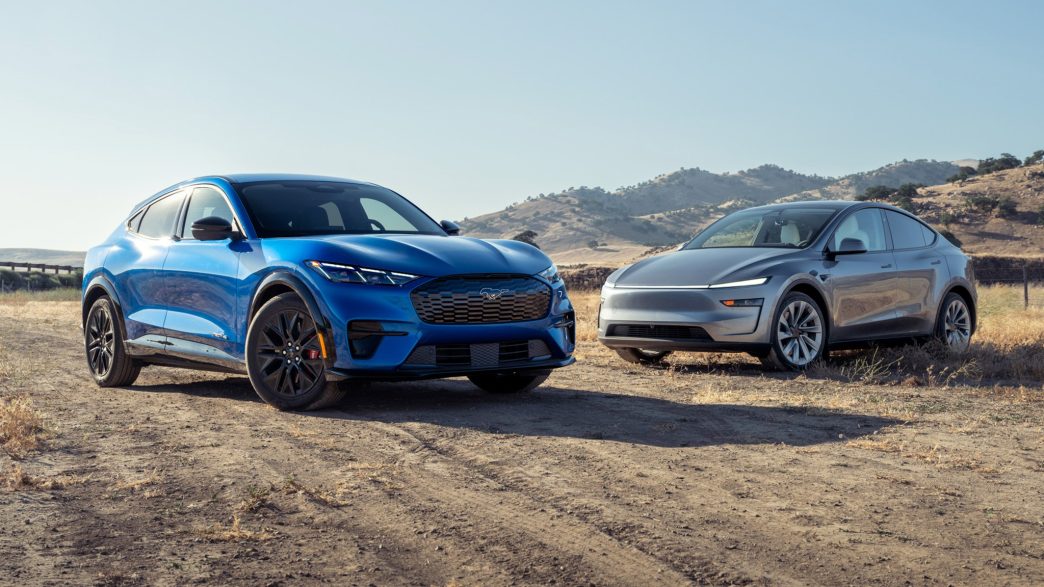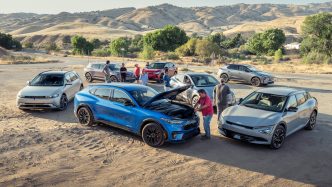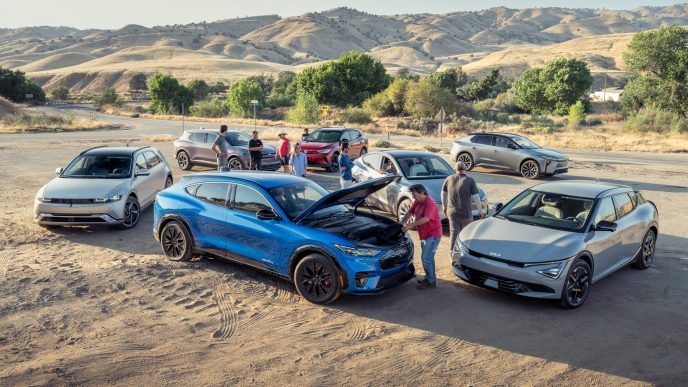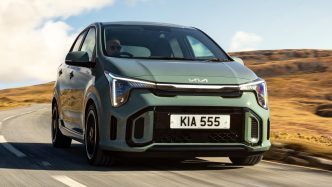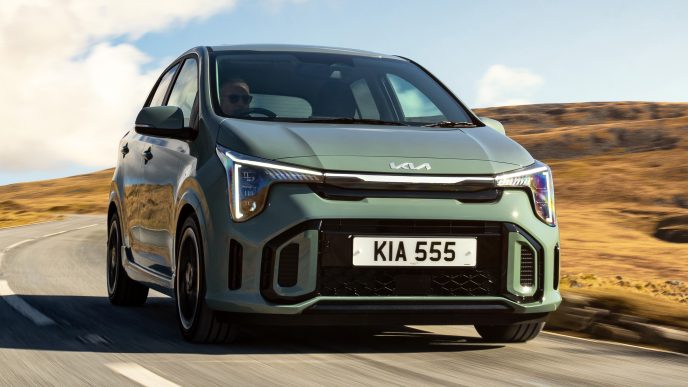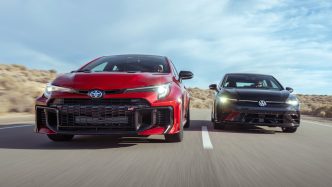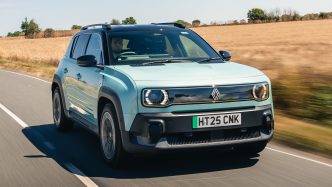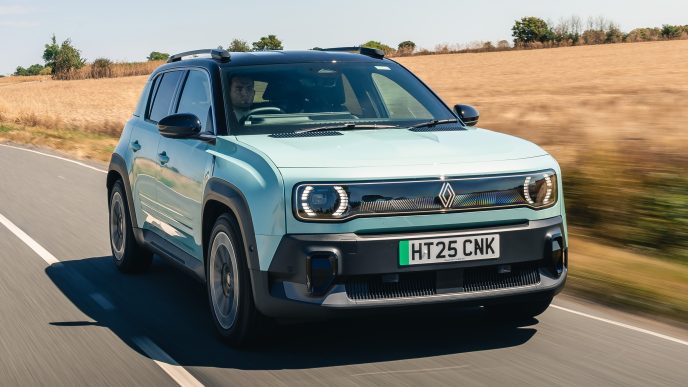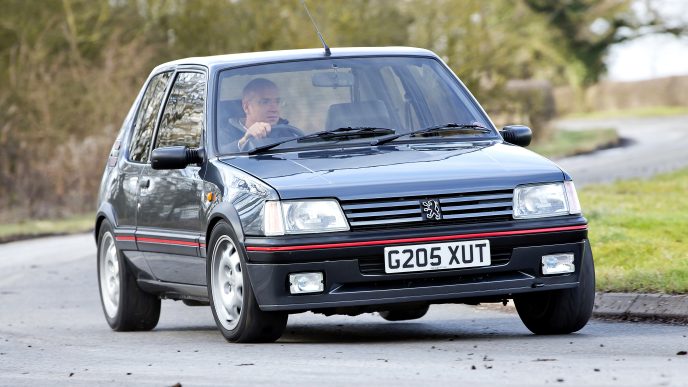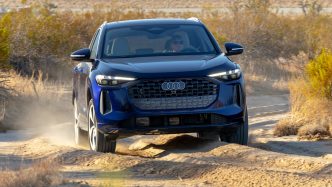The midsize electric SUV market might be young, but Tesla’s Model Y and Ford’s Mustang Mach-E have been here since the start, shaping it into what it is today. Despite a flood of new contenders, these two remain the best-selling choices. Their secret? A steady rhythm of software and hardware updates that keep them relevant — the latest rounds of which are now rolling out.
The 2026 Tesla Model Y arrives with its long-awaited Juniper refresh, introducing a wave of upgrades inside and out. Meanwhile, the 2025 Mustang Mach-E continues its measured evolution, fine-tuning what was already solid. The question is whether Tesla’s broad improvements can defend its crown, or if Ford’s focused enhancements finally give it the edge. Let’s find out.
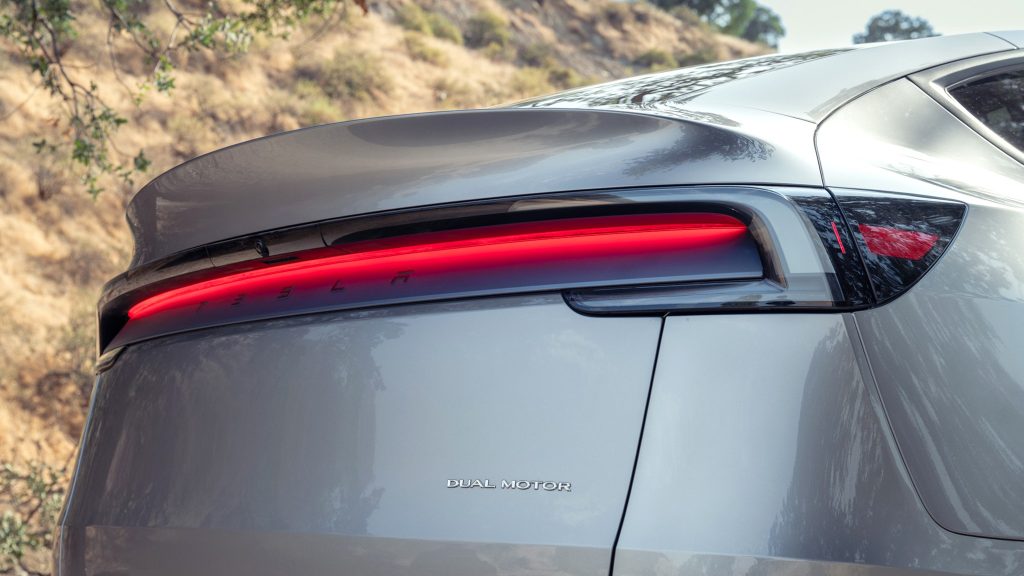
What’s New with the Model Y
At first glance, it’s clear Tesla has gone bolder with the exterior — though not necessarily better. The facelift takes a few steps back, especially at the rear, which looks like something out of an off-brand Chinese catalog. The Cybertruck-inspired lightbar up front is intriguing, but it doesn’t fully redeem the design misfire at the back.
Step inside, however, and the transformation feels far more intentional. The cabin finally feels premium, with tasteful fabric inserts, a refined two-tone palette, and soft ambient lighting that ties the look together. The new rear display is a clever touch, but its placement by your knees makes it more of a high-tech gimmick than a truly useful screen for entertainment.
Of course, Tesla couldn’t resist reinventing something simple. The old shifter stalk is gone, replaced by a digital gear selector at the top left corner of the touchscreen, with a backup touch control on the ceiling. Software predicts which direction you want to go — usually right — but swiping up and down just doesn’t match the tactile feel of a physical lever.
Thankfully, Tesla spared the turn signal stalk, unlike in the latest Model 3. The steering wheel buttons are odd but functional, though nearly every other control still lives in the central screen. That display is increasingly cluttered, buried under menus and a swarm of apps, blurring the line between a car interface and a smartphone.

What’s New with the Mach-E
Ford skipped a dramatic facelift, but subtle changes add up. The biggest news is the new shifter stalk mounted on the steering column — right where Tesla used to have one — replacing the much-maligned rotary dial on the console. It feels more natural to use, and the freed-up space now holds practical storage cubbies, including a clever upright slot for your phone when it’s not charging.
Other tweaks have trickled in over time. The rear motor received an upgrade last year, along with new software for smoother power delivery, improved cooling, and faster charging. Inside, Ford dressed up the cabin with textured cloth and contrast stitching that bring a premium touch to both rows. Meanwhile, its infotainment and BlueCruise hands-free system continue to evolve through frequent updates — a page straight from Tesla’s playbook.
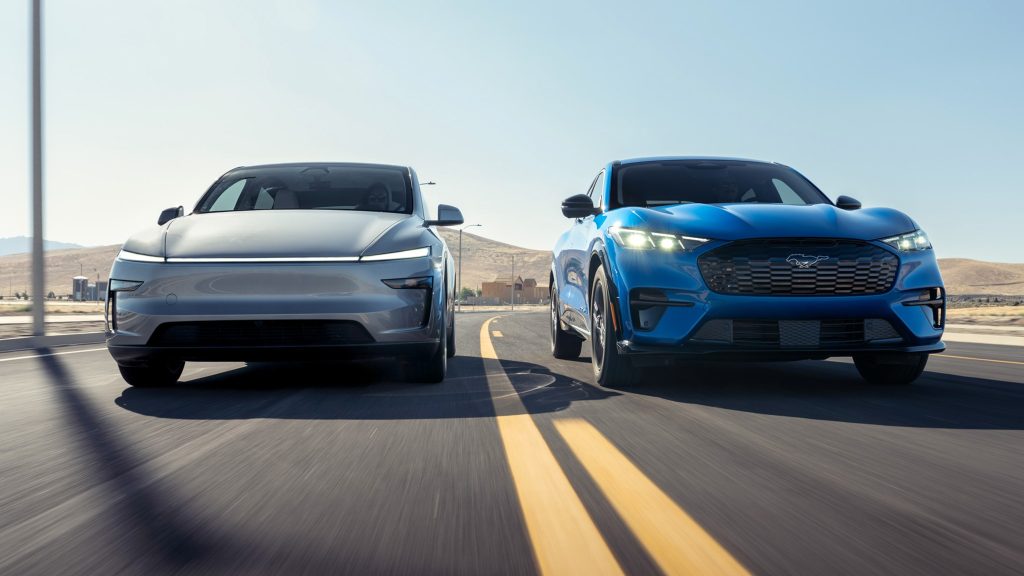
Driving Differences
The most meaningful change to the Model Y hides beneath its body. Tesla’s fitted new shock absorbers that finally deliver a decent ride — a low bar to clear, but progress nonetheless. It’s far less harsh now, though still prone to jolts over big bumps. Cabin noise is also noticeably reduced; road roar from the tires persists, but overall, the Tesla feels quieter and calmer than before.
The Mach-E, by contrast, has always been composed. Its suspension is firmer, but that stiffness translates to tighter control and smoother handling over undulating roads. It’s more reassuring over distance, offering a planted, confidence-inspiring feel that the Tesla still can’t quite match.
Both EVs allow for one-pedal driving, slowing aggressively when you lift off the accelerator. Tesla edges ahead here with adjustable regenerative braking levels, making it easier to tailor the response and keep the experience fluid.
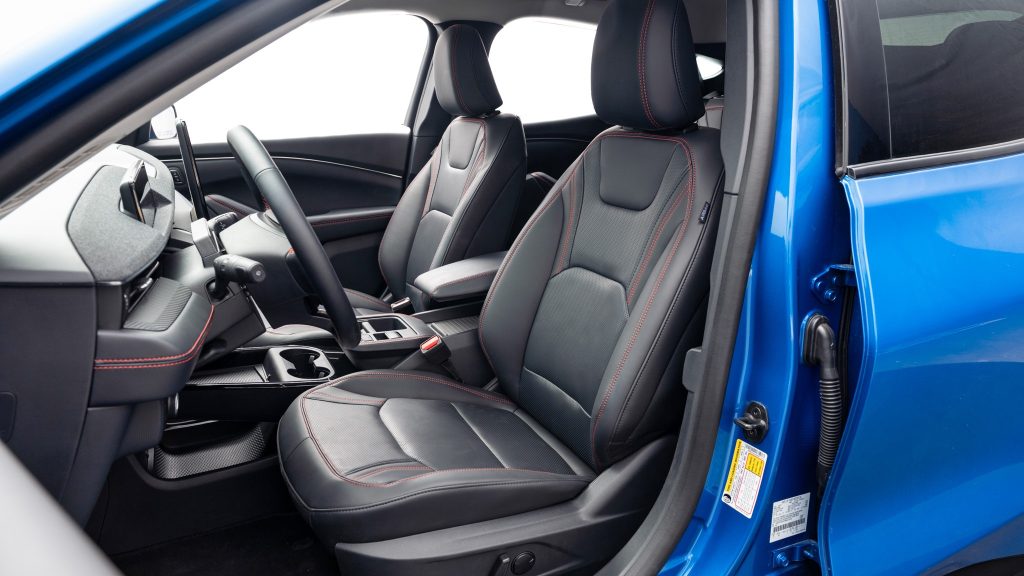
Differences in Comfort
When it comes to seating, Ford wins for softness and cushion support — especially in the back. Tesla, on the other hand, counters with better space management. The Model Y’s interior feels airier, and its larger door openings make climbing in and out simpler. It also offers more legroom and cargo space, including a cavernous underfloor compartment that dwarfs the Mach-E’s smaller storage area (occupied partly by a repair kit and charger). Both have front trunks, but again, Tesla’s is the more generous.
Each EV features a panoramic roof, but Ford’s version is far more practical thanks to its real sunshade. Tesla relies on UV coatings and tinting, which leave passengers roasting under direct sunlight. Ford’s power shade, in contrast, feels like a blessing — especially when Tesla dares to sell a flimsy add-on shade for about $105.
Climate control follows a similar story. Tesla’s hidden air vents look futuristic but frustrate in practice. Adjusting airflow on a screen mid-drive is a needless chore. Ford sticks with traditional adjustable vents, and frankly, it’s the smarter choice — no reinventing the wheel required.
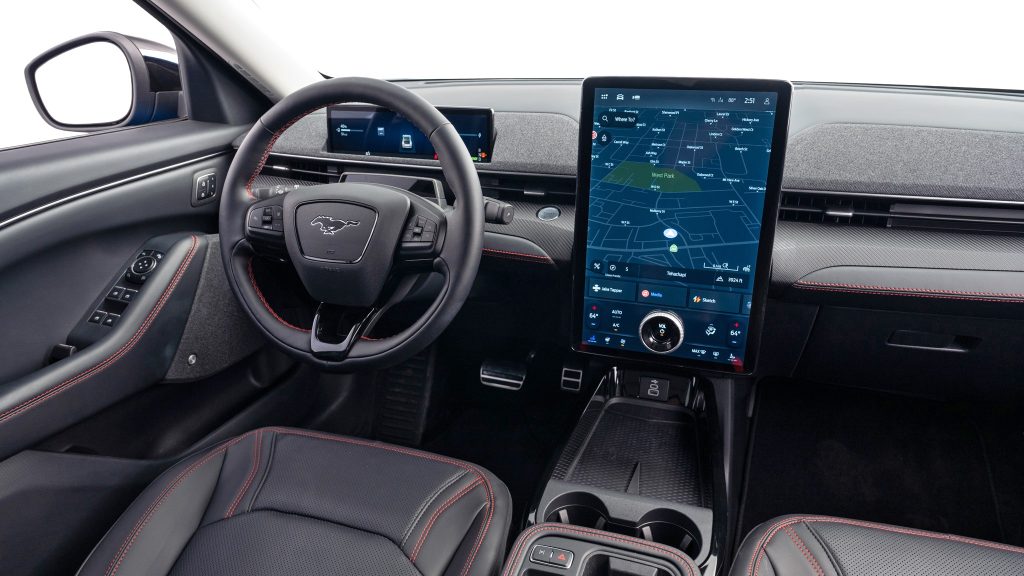
Tech Differences
Technology is where these EVs continue to spar. Ford’s portrait-style screen keeps more functions visible at once, though some sit too low for easy reach. We do appreciate the physical multifunction dial embedded in the display — one knob that handles volume, temperature, and seat comfort with a twist.
Tesla’s horizontal interface looks sleek but suffers from its obsession with minimalism. Essential functions are buried deep in menus, and basic readouts like speed and battery status are placed awkwardly to the side. The constant reshuffling of app icons on both systems doesn’t help — it’s maddening when controls keep migrating while you drive.
At least Ford lets you bypass all that with Apple CarPlay or Android Auto. Tesla, predictably, refuses to play along, which turned off several testers. Similarly, Tesla’s low-res “heat map” parking aid feels primitive next to the Mach-E’s crisp 360-degree camera system. When maneuvering in tight spaces, seeing the real world beats a pixelated guess every time.
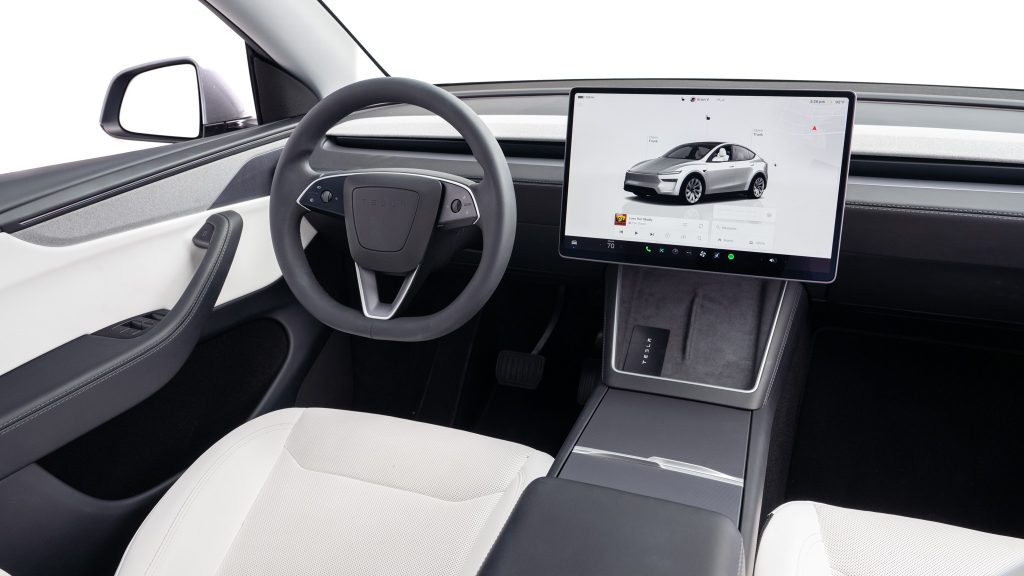
FSD (Supervised) or BlueCruise?
You can’t talk about EV tech without bringing up the semi-autonomous driving aids that dominate the conversation. Tesla’s “Full Self-Driving (Supervised)” might grab the headlines, but is it actually better than Ford’s BlueCruise? The short answer—no, not really.
When it comes to execution, BlueCruise wins on consistency. It may offer fewer features, but it performs them with polish and reliability. Tesla’s FSD (Supervised), on the other hand, tries to do it all—sometimes brilliantly, often clumsily.
Both systems manage acceleration, braking, and steering, but only BlueCruise lets you take your hands off the wheel. Tesla still demands a periodic tug or nudge to confirm you’re paying attention. Each can handle automatic lane changes, overtaking slower traffic and merging back in, but the Ford consistently completed those maneuvers more gracefully.
Both employ driver-monitoring cameras, but again, Ford’s setup feels more mature. It detects the driver’s gaze more accurately, cutting down on false alerts. Tesla’s system struggles when sunglasses are involved and frequently switches between camera monitoring and steering-wheel torque detection, flooding the display with notifications. Ford’s communication is simpler: a small instrument cluster above the wheel glows blue when BlueCruise is active—no guesswork required.
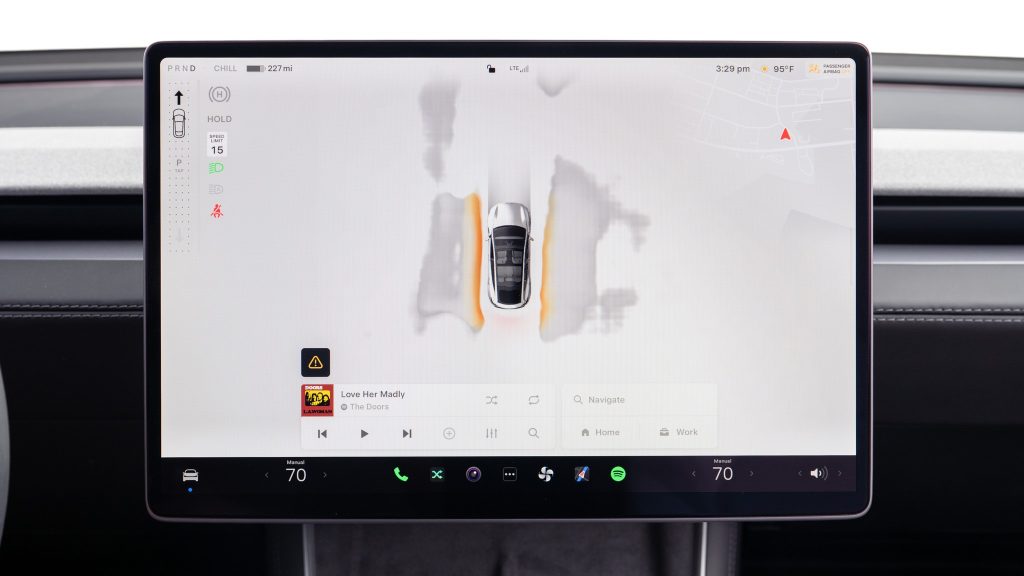
On the road, both systems deliver a confident, composed experience. They track lanes smoothly, brake and accelerate naturally, and change lanes assertively without feeling reckless. Tesla’s adjustable aggressiveness setting is a nice touch, but the Ford’s single, well-tuned profile feels effortless and human.
FSD (Supervised) covers more ground—literally—but that’s where its cracks show. BlueCruise limits itself to pre-mapped highways and does its job nearly flawlessly. Tesla’s system works everywhere, but its reliability depends heavily on where you are. It handled stop signs and traffic lights in town with impressive precision, yet on narrow, unmarked country roads, it faltered—hesitating through turns, drifting across lines, and crawling along like a nervous student driver.
On highways, FSD (Supervised) redeemed itself, confidently navigating long stretches without driver input. But once it reached its destination, chaos ensued. The car entered the right parking lot but couldn’t quite figure out what to do next—dropping one tester behind the hotel, another across the street, and one halfway into traffic before stopping in confusion.
After extensive testing in our long-term Model Y, our verdict remains unchanged: FSD (Supervised) simply isn’t ready for full trust. It’s capable but unpredictable. BlueCruise, though more limited, executes every task cleanly, without ghost braking, erratic steering, or overconfidence.
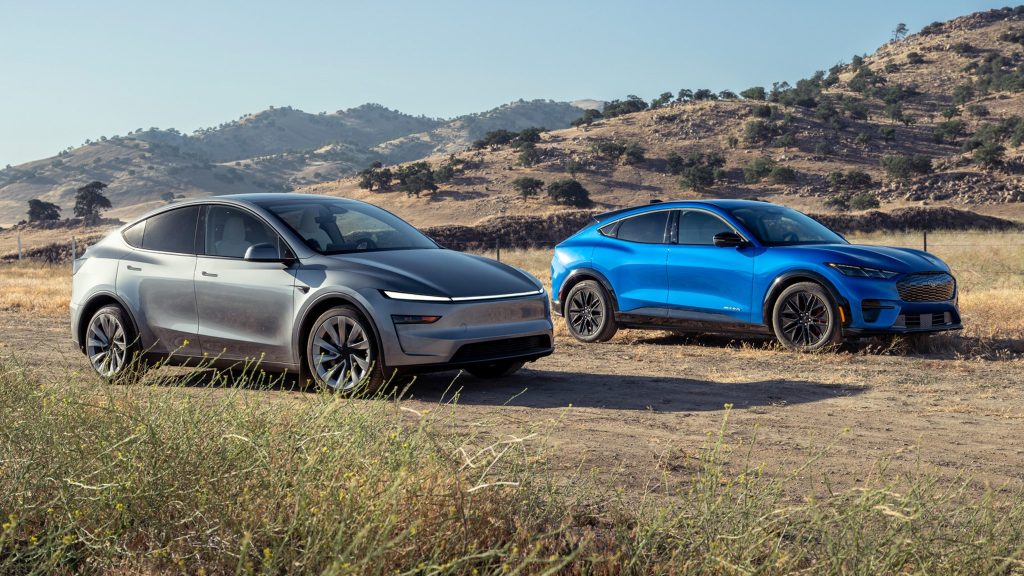
A Difference in Charging
EV comparisons often hinge on charging—and Tesla’s once-unshakable dominance here has weakened. The brand’s Supercharger network, once exclusive, is now open to rivals. Ford’s Mach-E can access it with a $200 adapter, neatly leveling the playing field. Even Ford’s route-planning software has evolved to rival Tesla’s seamless trip mapping.
Still, when it comes to charging speed, Tesla remains the benchmark. The Model Y supports up to 250 kW, far beyond the Mach-E’s 150 kW ceiling. That translates to 36 more miles of range gained every 15 minutes—an advantage that adds up fast on long road trips.
Yet once charged, the edge disappears. While the EPA rates the Model Y’s range at 311 miles versus the Mach-E’s 300, our real-world highway test—holding a steady 70 mph until each dropped to 5 percent battery—saw both covering exactly 252 miles. So yes, the Tesla charges faster, but it won’t actually get you there sooner.
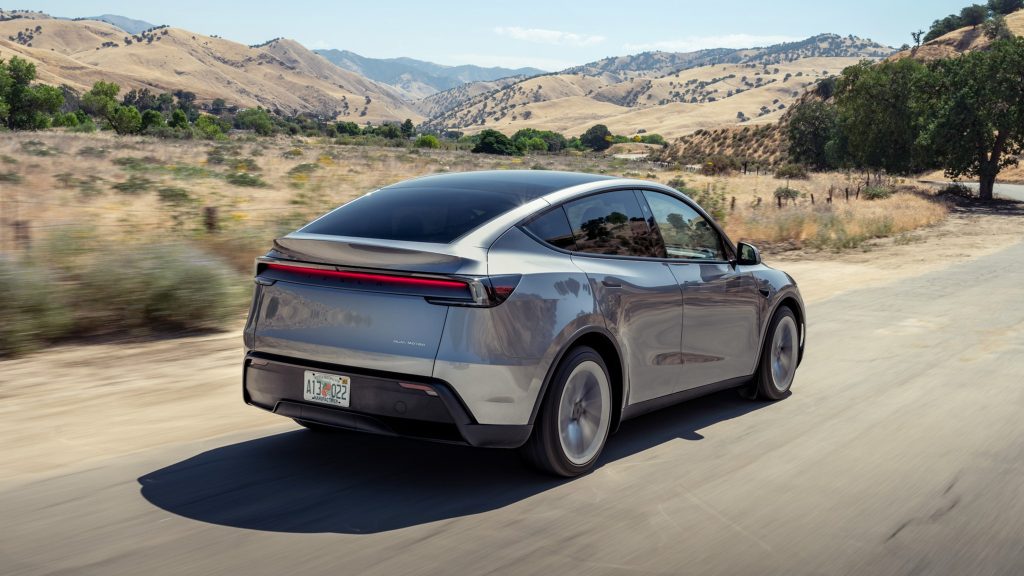
A Difference in Performance
Despite wearing the Mustang badge, the Mach-E can’t outmuscle the Tesla in raw numbers. On the test track, the Model Y dominated in acceleration, grip, and lap times. The only area they tied was braking from 60 mph, both stopping in 120 feet.
Dig deeper, though, and the story gets more nuanced. The Mach-E’s shorter gearing and higher torque give it a stronger launch, but Tesla’s extra horsepower wins the top-end battle. Both could have performed even better if their makers had loosened electronic restrictions—Ford with better tires, Tesla by allowing drivers to disable traction and stability controls. Tesla’s brakes, despite its performance rubber, faded badly after three hard stops, while the Ford’s remained stable.
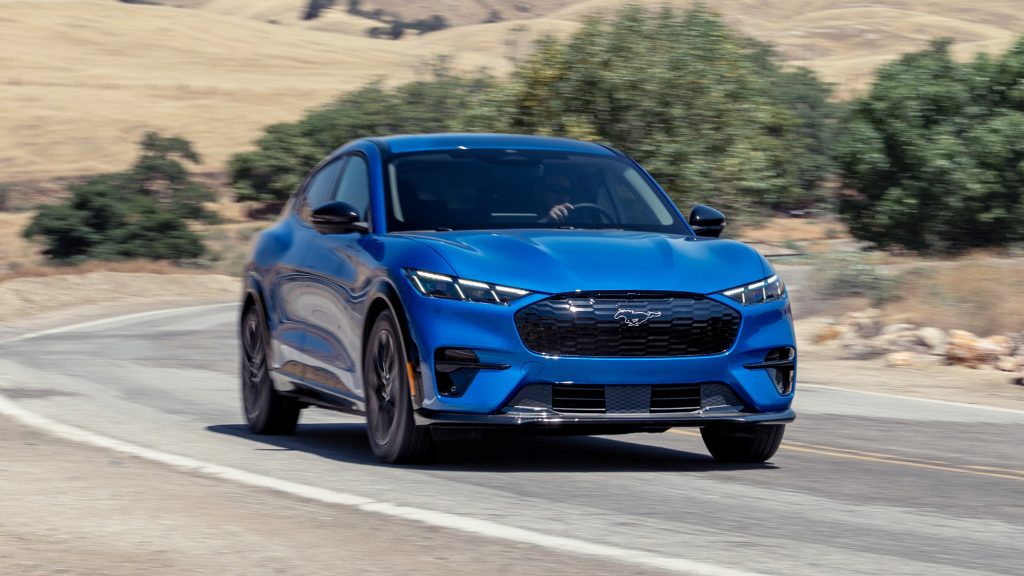
But out in the real world, those stats matter less. The Mach-E simply feels more alive. Its steering, suspension, and body control make it a joy through corners—nimble, composed, and genuinely engaging. Ford’s decades of chassis tuning expertise shine through here, giving the Mach-E an edge in character if not in sheer speed.
It’s as though a touch of the Mach-E Rally’s suspension magic has seeped into this version. The ride is firm but communicative, the steering weight just right, and the braking reassuringly strong. The tires complain early, but that’s an easy fix.
The Model Y, in contrast, feels competent yet sterile. Its steering is lightning-quick but devoid of feedback, and though it grips well, it lacks the tactile connection that makes spirited driving fun. It accelerates with the relentless precision of a power tool—but passion doesn’t live in precision alone. Every judge agreed: the Tesla is faster, but the Ford is far more enjoyable.
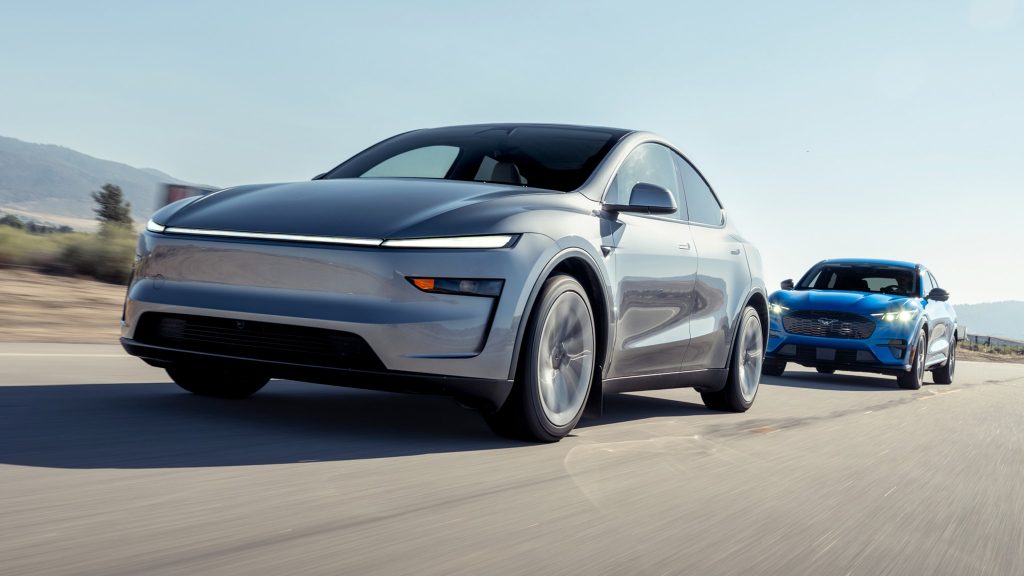
A Difference in Price—and Value
Not long ago, Tesla was the only brand delivering affordable electric performance. That’s no longer true. The all-wheel-drive Mach-E undercuts the AWD Model Y by $3,640 before options. Once configured, the Ford in our test came in $5,000 cheaper overall.
And that difference isn’t just about numbers—it’s about value. The Mach-E offers a smoother ride, a more comfortable cabin, better overall balance, and comparable tech, all for less money. Sure, you’ll spend a few extra minutes at the charger and tolerate a bit more cabin noise, but saving $5,000 makes those compromises easy to live with.
There Can Be Only One
After years of incremental improvements, both the Model Y and Mach-E remain top contenders in the midsize EV SUV class. Tesla’s Juniper update sharpens its edges but doesn’t fix its flaws. With the charging gap closed and Ford’s systems refined, the Mustang Mach-E has finally overtaken the long-standing segment leader. The verdict is clear: Ford’s methodical evolution has triumphed over Tesla’s complacency.
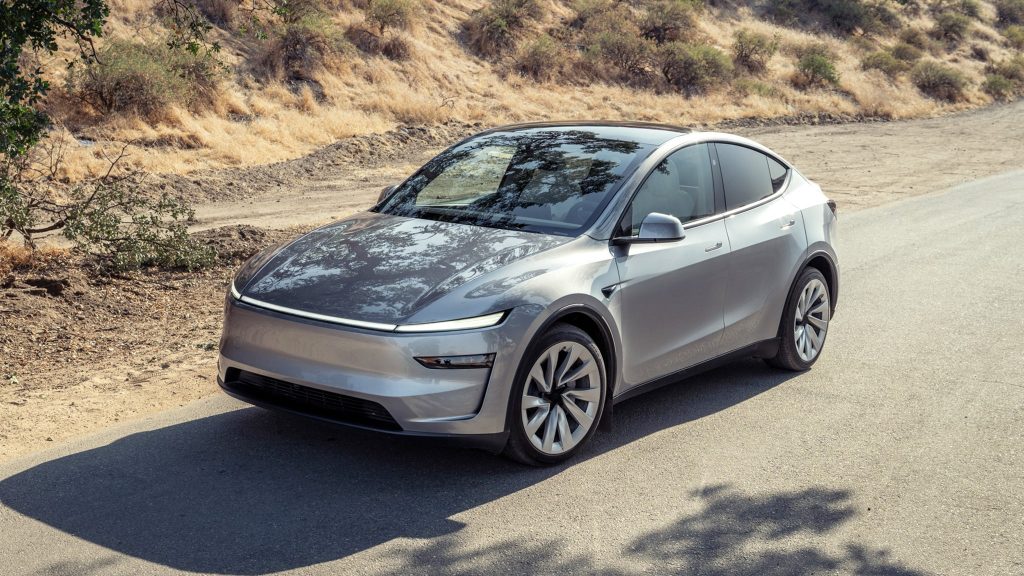
2nd Place: Tesla Model Y
Pros
- Interior quality improved
- Faster charging
- Large front trunk
Cons
- Ride still too harsh
- FSD (Supervised) unreliable
- Design downgrade
Verdict: Tesla has coasted on past success, and it’s starting to show.
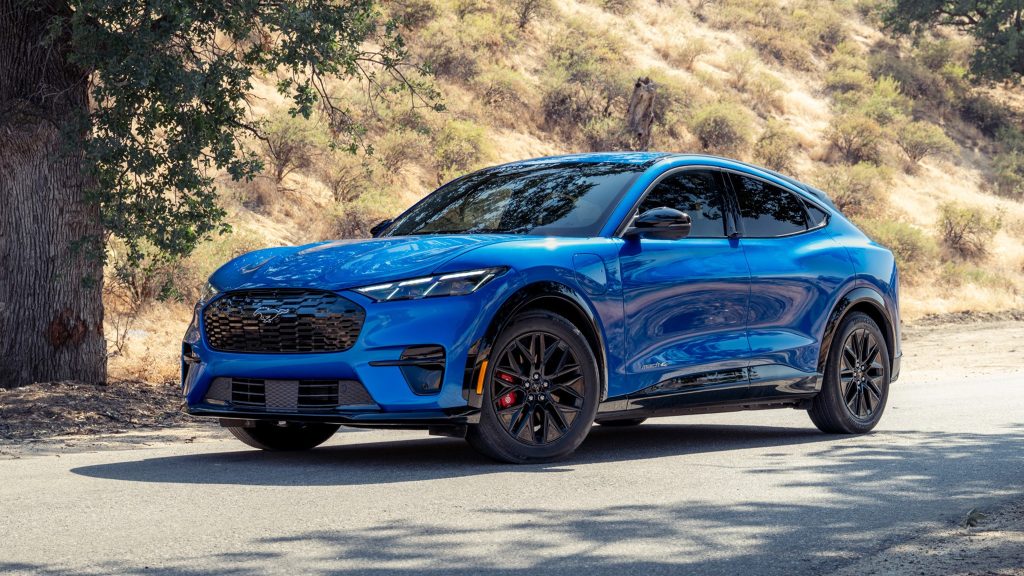
1st Place: Ford Mustang Mach-E
Pros
- Engaging to drive
- BlueCruise works flawlessly
- Better overall value
Cons
- Slower charging
- Smaller front trunk
- Louder cabin
Verdict: The Mach-E doesn’t need to reinvent the wheel—it just had to perfect it. Ford now builds the most complete midsize electric SUV on the market.

| 2025 Ford Mustang Mach-E Premium eAWD Specifications | 2026 Tesla Model Y Long Range AWD Specifications | |
| BASE PRICE | $46,990 | $50,630 |
| PRICE AS TESTED | $58,670 | $63,630 |
| VEHICLE LAYOUT | Front- and rear-motor, AWD, 5-pass, 4-door electric SUV | Front- and rear-motor, AWD, 5-pass, 4-door electric SUV |
| Powertrain | ||
| TOTAL POWER | 370 hp | 397 hp |
| TOTAL TORQUE | 500 lb-ft | 389 lb-ft |
| MOTORS | F: permanent-magnet motor, NA hp, 111 lb-ft R: permanent-magnet motor, NA hp, 387 lb-ft | F: induction motor, 117 hp, 124 lb-ft R: permanent-magnet motor, 280 hp, 265 lb-ft |
| BATTERY | 88.0-kWh NCM lithium-ion | 79.5-kWh NCA lithium-ion |
| TRANSMISSIONS | 2 x 1-speed fixed ratio | 2 x 1-speed fixed ratio |
| GEAR RATIO, F/R | 10.01:1/9.72:1 | 9.04:1/9.04:1 |
| Chassis | ||
| SUSPENSION | F: struts, coil springs, anti-roll bar R: multilink, coil springs, anti-roll bar | F: multilink, coil springs, anti-roll bar R: multilink, coil springs, anti-roll bar |
| STEERING RATIO | 14.6:1 | 13.8:1 |
| TURNS LOCK-TO-LOCK | 2.7 | 2.4 |
| BRAKES | F: 14.3 x 1.1-in vented disc, 4-piston fixed caliper R: 12.4 x 0.4-in disc, 1-piston sliding caliper | F: 14.0 x 1.0-in vented disc, 4-piston fixed caliper R: 13.2 x 0.8-in vented disc, 1-piston sliding caliper |
| WHEELS | 7.5 x 19 in, cast aluminum | 9.5 x 20 in, cast aluminum |
| TIRES | Bridgestone Alenza A/S 02 225/55R19 103H XL M+S | Hankook Ion Evo AS SUV T0 255/40R20 101V XL M+S |
| Dimensions | ||
| WHEELBASE | 117.5 in | 113.8 in |
| TRACK, F/R | 63.5/63.4 in | 64.4/64.4 in |
| LENGTH x WIDTH x HEIGHT | 185.6 x 74.1 x 64.1 in | 188.6 x 75.6 x 63.9 in |
| GROUND CLEARANCE | 6.2 in | 6.6 in |
| APPRCH/DEPART ANGLE | 15.4/26.0 deg | 16.0/18.0 deg (est) |
| TURNING CIRCLE | 38.1 ft | 39.8 ft |
| CURB WEIGHT (DIST F/R) | 4,760 lb (49/51%) | 4,424 lb (50/50%) |
| WEIGHT TO POWER | 13.0 lb/hp | 11.1 lb/hp |
| HEADROOM, F/R | 38.9/39.3 in | 41.0/39.4 in |
| LEGROOM, F/R | 43.3/38.1 in | 41.9/40.5 in |
| SHOULDER ROOM, F/R | 57.6/55.9 in | 56.4/53.2 in |
| CARGO VOLUME BEHIND F/R | 59.1/29.7 cu ft (2.6 cu ft frunk) | 71.4/29.0 cu ft (4.1 cu ft frunk) |
| PAYLOAD CAPACITY | 980 lb | 1,102 lb |
| TOWING CAPACITY | Not recommended | 3,500 lb |
| MotorTrend Test Data | ||
| 0-30 MPH | 1.6 sec | 1.7 sec |
| 0-40 MPH | 2.2 sec | 2.4 sec |
| 0-50 MPH | 3.1 sec | 3.1 sec |
| 0-60 MPH | 4.1 sec | 3.8 sec |
| 0-70 MPH | 5.5 sec | 4.7 sec |
| 0-80 MPH | 7.2 sec | 5.8 sec |
| 0-90 MPH | 9.2 sec | 7.1 sec |
| 0-100 MPH | 11.7 sec | 8.7 sec |
| PASSING, 45-65 MPH | 2.1 sec | 1.5 sec |
| QUARTER MILE | 13.0 sec @ 104.4 mph | 12.2 sec @ 116.3 mph |
| BRAKING, 60-0 MPH | 120 ft | 120 ft |
| LATERAL ACCELERATION | 0.81 g | 0.83 g |
| FIGURE-EIGHT LAP | 26.3 sec @ 0.70 g (avg) | 25.3 sec @ 0.78 g (avg) |
| Consumer Info | ||
| AIRBAGS | 9: dual front, f/r side, f/r curtain, driver knee, m/r seatbelt | 9: dual front, front side, f/r curtain, front knee, front center |
| BASIC WARRANTY | 3 yr/36,000 mi | 4 yr/50,000 mi |
| POWERTRAIN WARRANTY | 5 yr/60,000 mi (8 yr/100,000 mi battery) | 8 yr/120,000 mi |
| ROADSIDE ASSISTANCE | 5 yr/60,000 mi | 4 yr/50,000 mi |
| EPA FUEL ECONOMY, CITY/HWY/COMBINED | 110/98/104 mpg-e | 123/111/117 mpg-e |
| EPA RANGE | 300 mi | 311 mi |
| 70-MPH ROAD-TRIP RANGE | 252 mi | 252 mi |
| MT FAST-CHARGING TEST | 95 mi @ 15 min, 158 mi @ 30 min | 133 mi @ 15 min, 194 mi @ 30 min |
| MAX CHARGING POWER, AC/DC | 11.0/150 kW | 11.5/250 kW |
| ON SALE | Now | Now |
